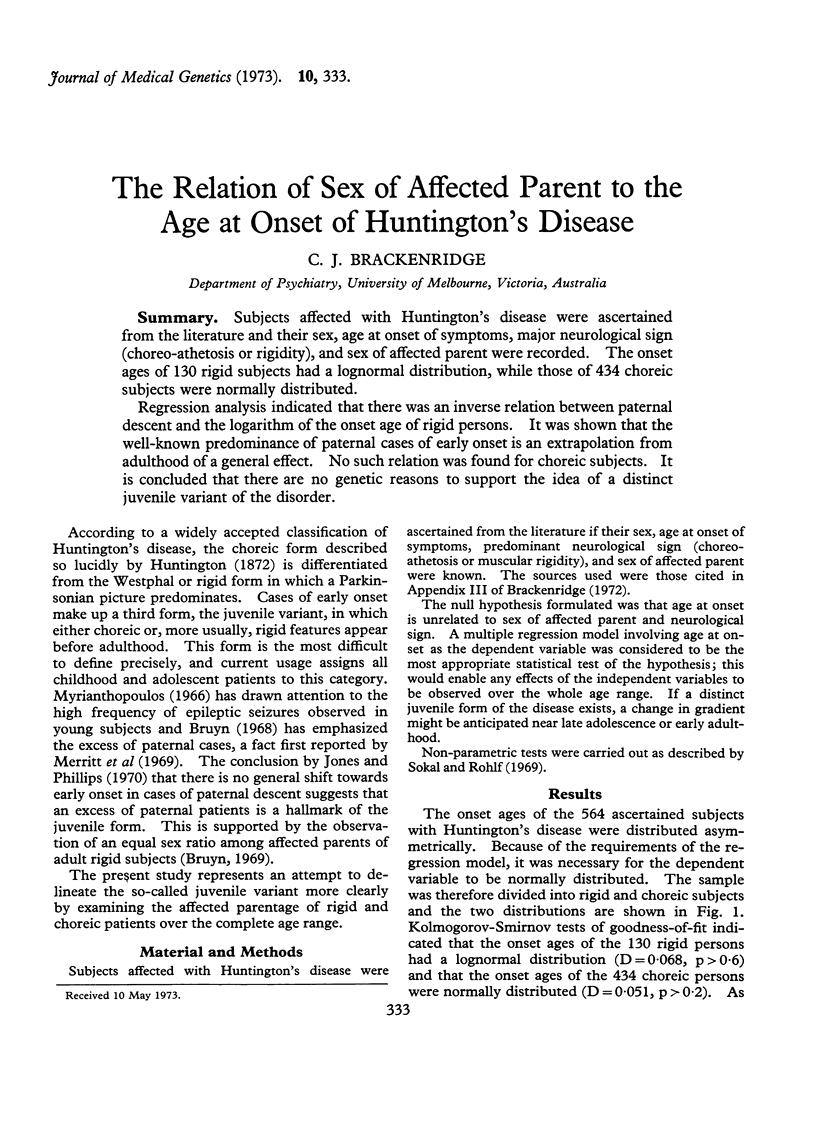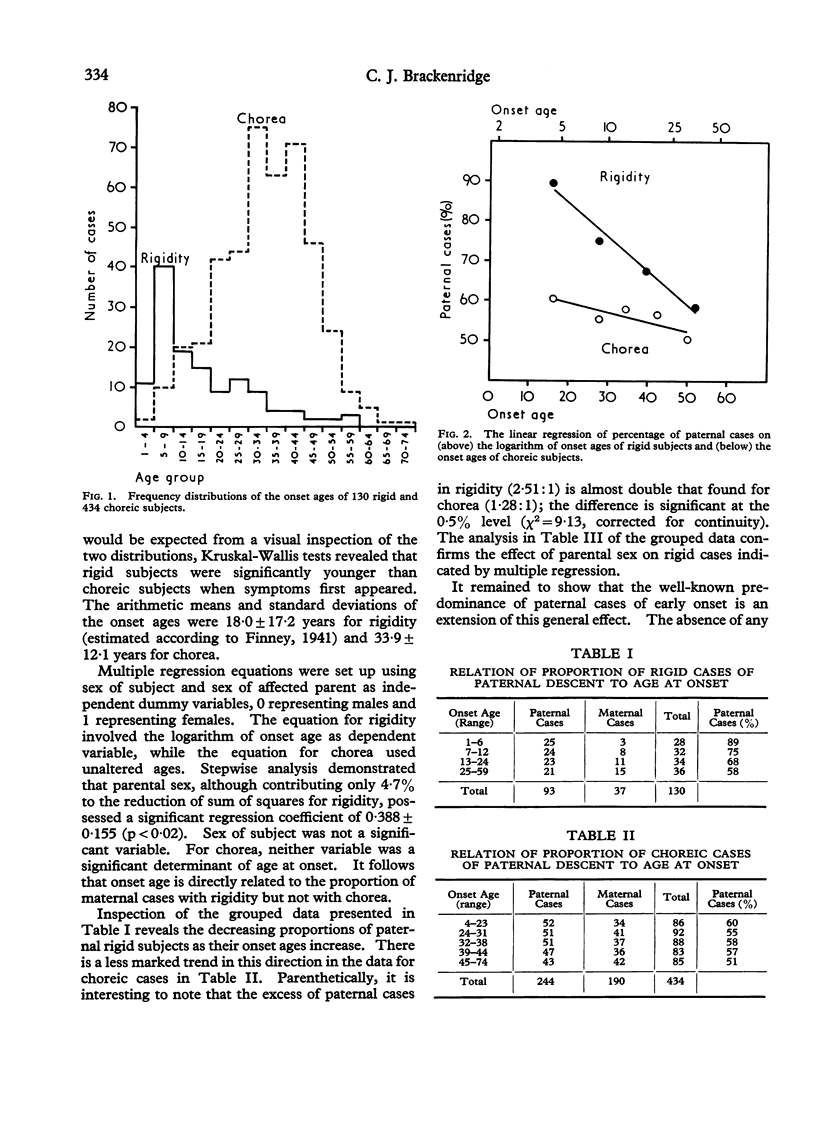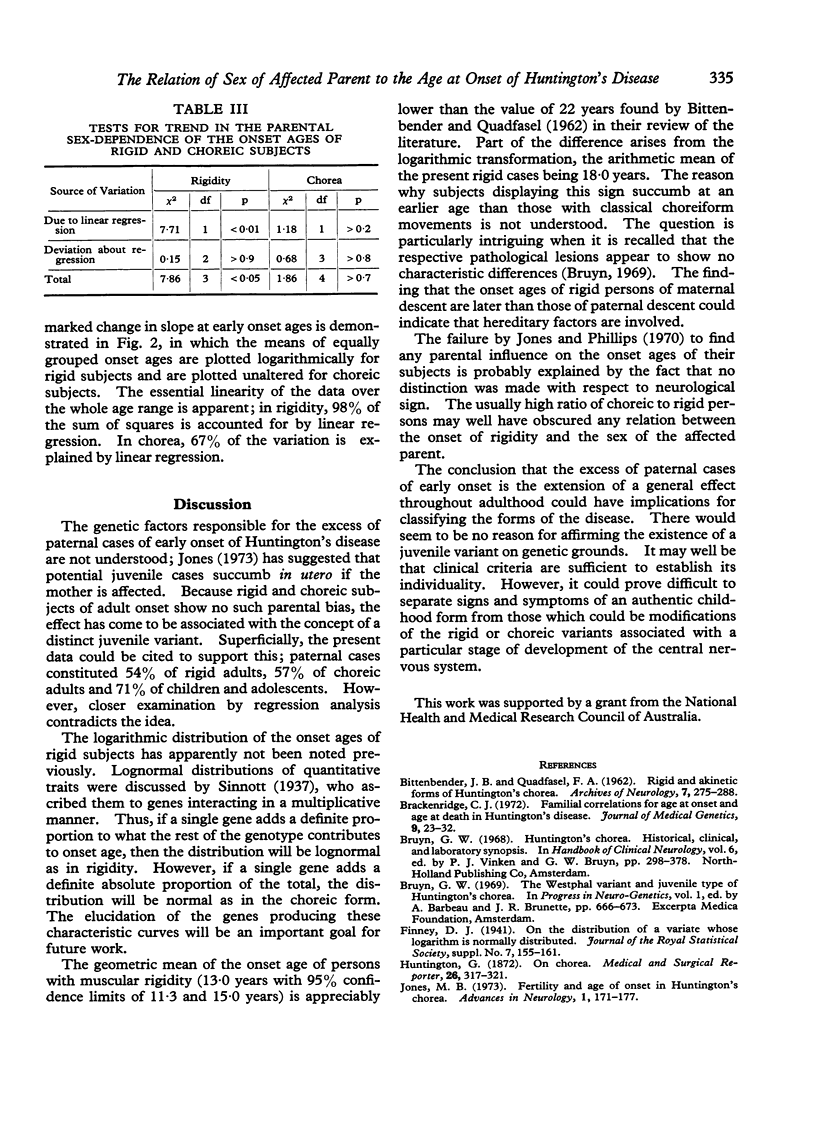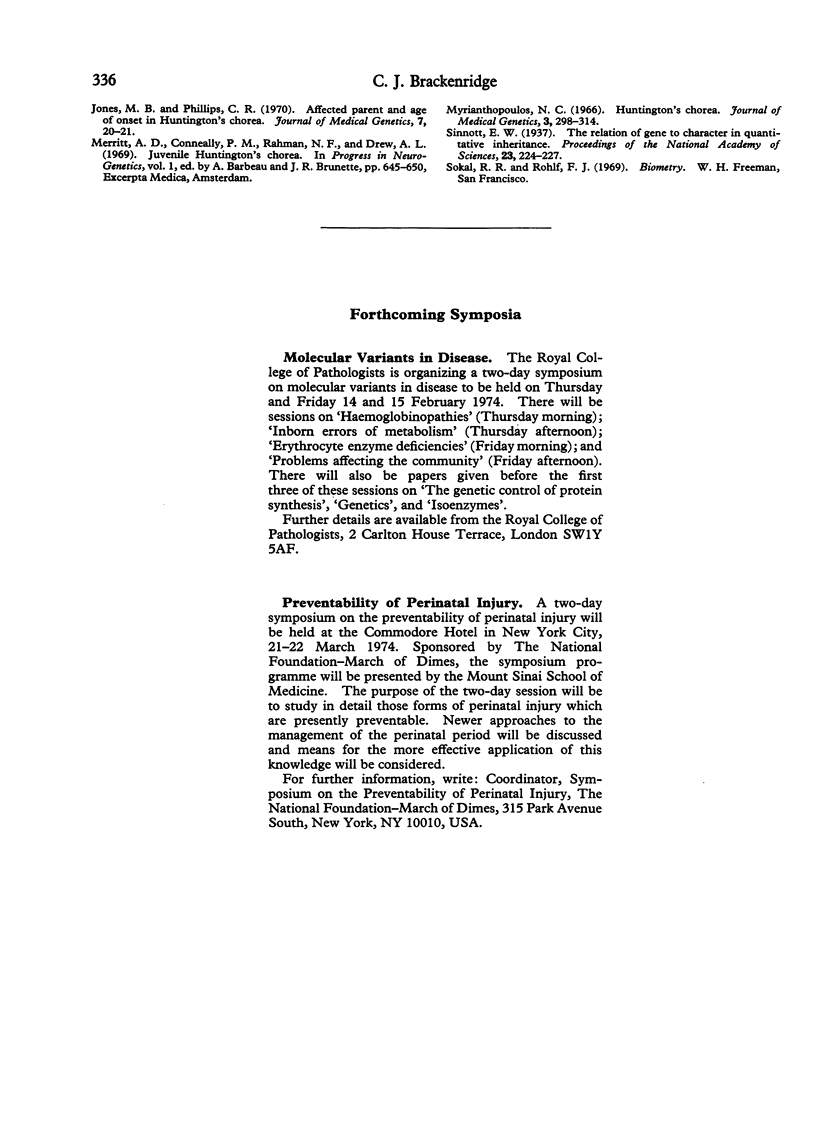Abstract
Subjects affected with Huntington's disease were ascertained from the literature and their sex, age at onset of symptoms, major neurological sign (choreo-athetosis or rigidity), and sex of affected parent were recorded. The onset ages of 130 rigid subjects had a lognormal distribution, while those of 434 choreic subjects were normally distributed.
Regression analysis indicated that there was an inverse relation between paternal descent and the logarithm of the onset age of rigid persons. It was shown that the well-known predominance of paternal cases of early onset is an extrapolation from adulthood of a general effect. No such relation was found for choreic subjects. It is concluded that there are no genetic reasons to support the idea of a distinct juvenile variant of the disorder.
Full text
PDF



Selected References
These references are in PubMed. This may not be the complete list of references from this article.
- BITTENBENDER J. B., QUADFASEL F. A. Rigid and akinetic forms of Huntington's chorea. Arch Neurol. 1962 Oct;7:275–288. doi: 10.1001/archneur.1962.04210040027003. [DOI] [PubMed] [Google Scholar]
- Brackenridge C. J. Familial correlations for age at onset and age at death in Huntington's disease. J Med Genet. 1972 Mar;9(1):23–32. doi: 10.1136/jmg.9.1.23. [DOI] [PMC free article] [PubMed] [Google Scholar]
- Jones M. B., Phillips C. R. Affected parent and age of onset in Huntington's chorea. J Med Genet. 1970 Mar;7(1):20–21. doi: 10.1136/jmg.7.1.20. [DOI] [PMC free article] [PubMed] [Google Scholar]
- Sinnott E. W. The Relation of Gene to Character in Quantitative Inheritance. Proc Natl Acad Sci U S A. 1937 Apr;23(4):224–227. doi: 10.1073/pnas.23.4.224. [DOI] [PMC free article] [PubMed] [Google Scholar]


